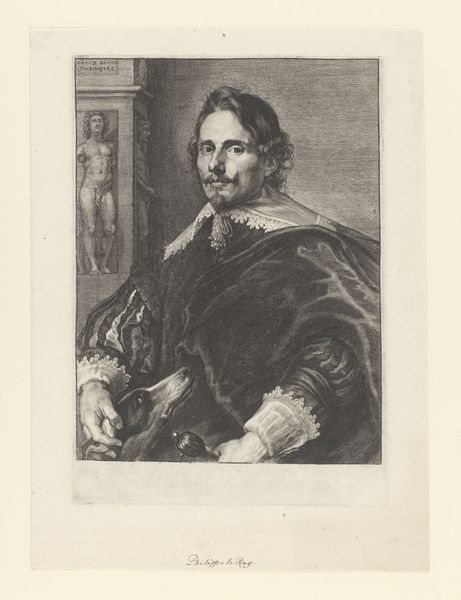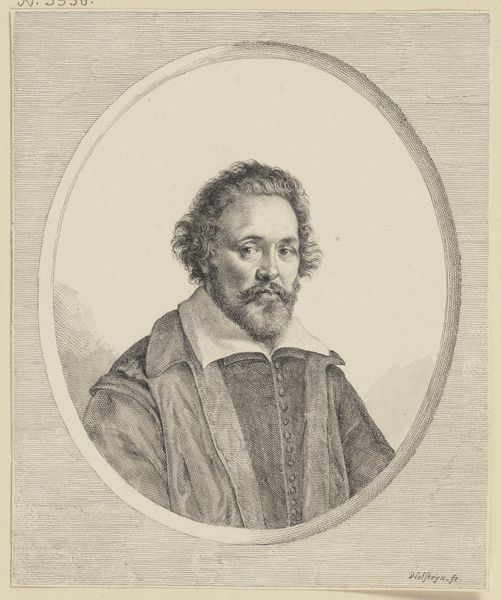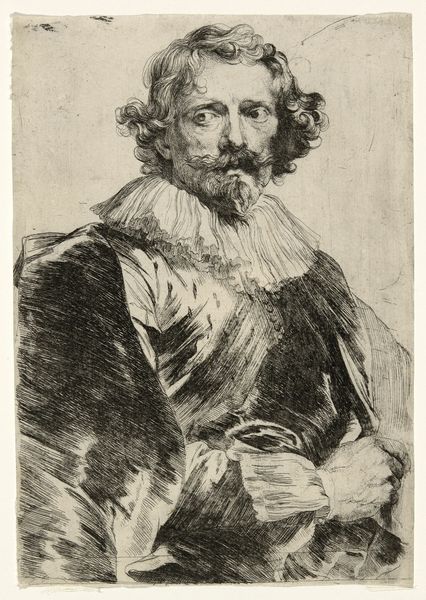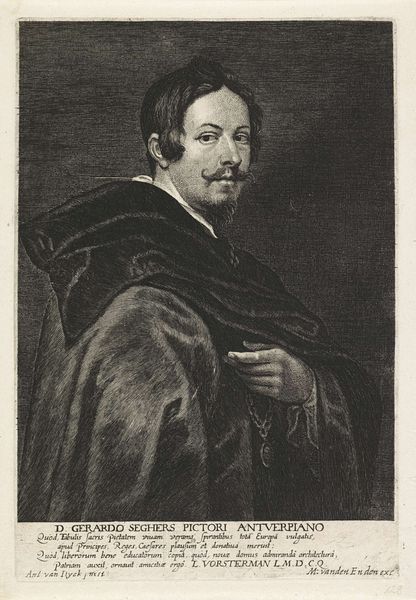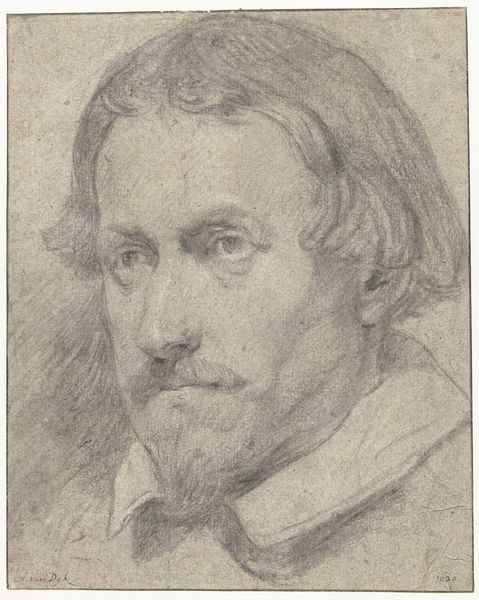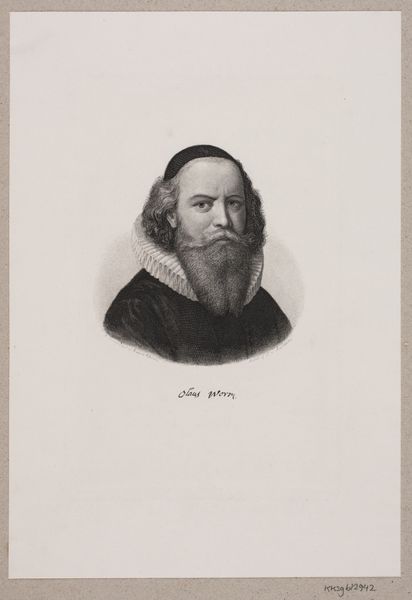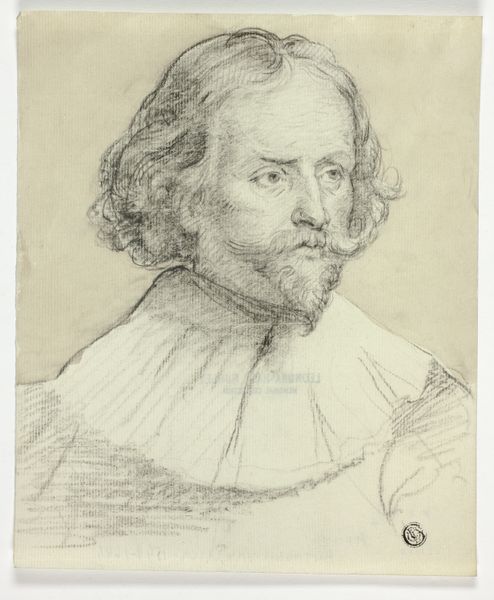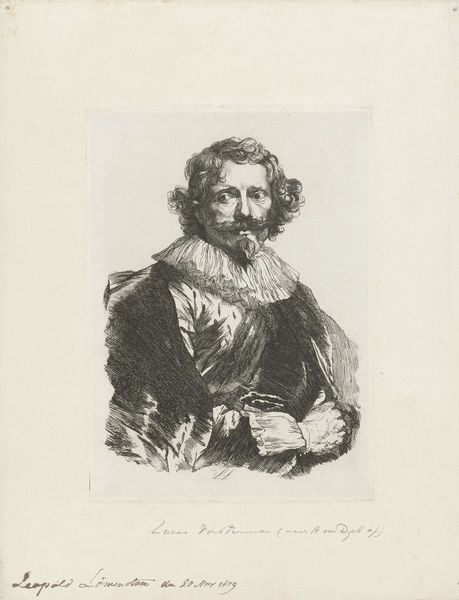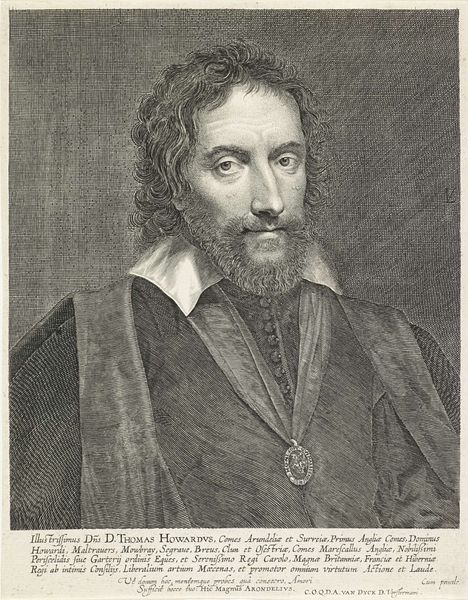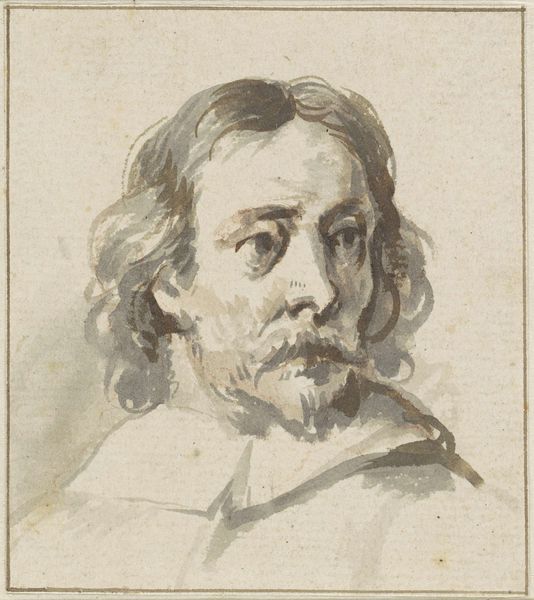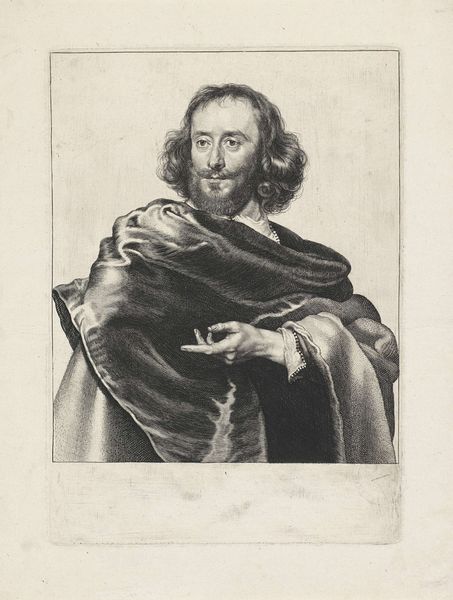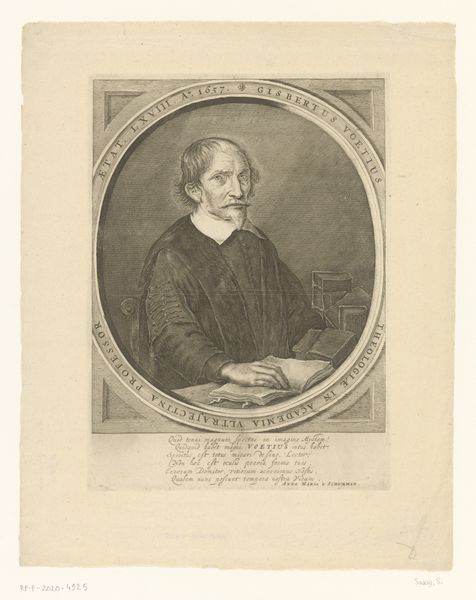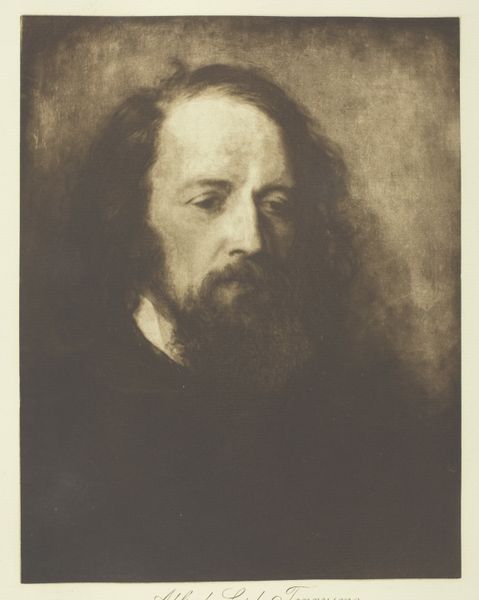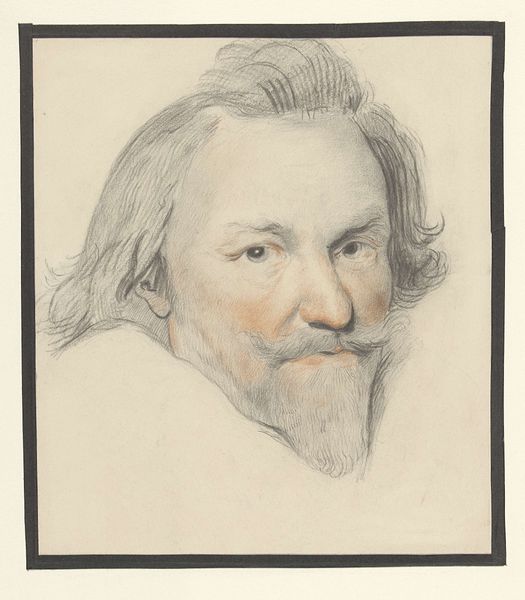
engraving
#
portrait
#
baroque
#
old engraving style
#
portrait drawing
#
engraving
Dimensions: height 248 mm, width 178 mm
Copyright: Rijks Museum: Open Domain
Editor: Here we have "Portrait of Lucas Vorsterman (I)", an engraving from between 1651 and 1652, residing here at the Rijksmuseum. The portrait is compelling, capturing the engraver in a contemplative mood. How do you interpret this work through the lens of symbolism and cultural memory? Curator: What strikes me is how this image, specifically as an engraving, becomes an almost timeless symbol of artistry itself. The very act of engraving—making multiple impressions—echoes the Renaissance idea of fame and the lasting impact of creative minds. Look at the weight of the cloak, almost theatrical; it suggests the burden and the glory of the artist's calling, wouldn't you agree? Editor: I see that. The cloak is a visual anchor, adding to the solemn mood. What about the text at the bottom? Does that add another layer of meaning? Curator: Absolutely! It is Latin; texts in works such as this serve as a caption that, like the image, memorializes the individual represented, whose "spirit" or essence remains present to the viewer. It underscores that the engraver leaves his lasting mark. Editor: It's amazing how an engraving can be so loaded with symbolic meaning. I always considered it as simply a medium for reproduction. Curator: But even the act of reproducing an image imbues it with cultural weight. Each impression carries the same symbolism and makes it available, widely propagating the ideas behind it. Does understanding this make you view other portraits differently now? Editor: It does. I'll definitely be looking closer at details like clothing and inscriptions for clues about the artist's intent and the work's cultural context. Curator: Excellent! This way, we see art not merely as aesthetic object, but as active carrier of meaning over time.
Comments
No comments
Be the first to comment and join the conversation on the ultimate creative platform.
